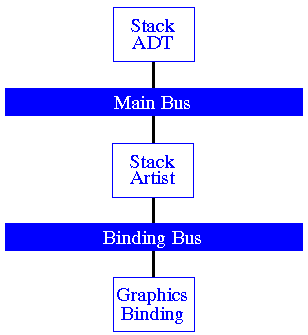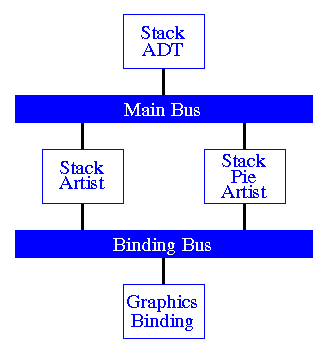ArchShell Example
ArchShell Example
The following example illustrates the commands used to construct a simple Stack visualization. The graphical depiction of the architecture is presented on the right.
Notice that the last command, start, initiates execution of the architecture. To demonstrate the runtime architecture modification, we add the StackPieArtist component to the running application. The graphical depiction of the architecture is presented on the right.
The current syntax for constructing architectures is extremely verbose. Future versions of ArchShell will also support a more compact textual syntax along with a graphical notation.

